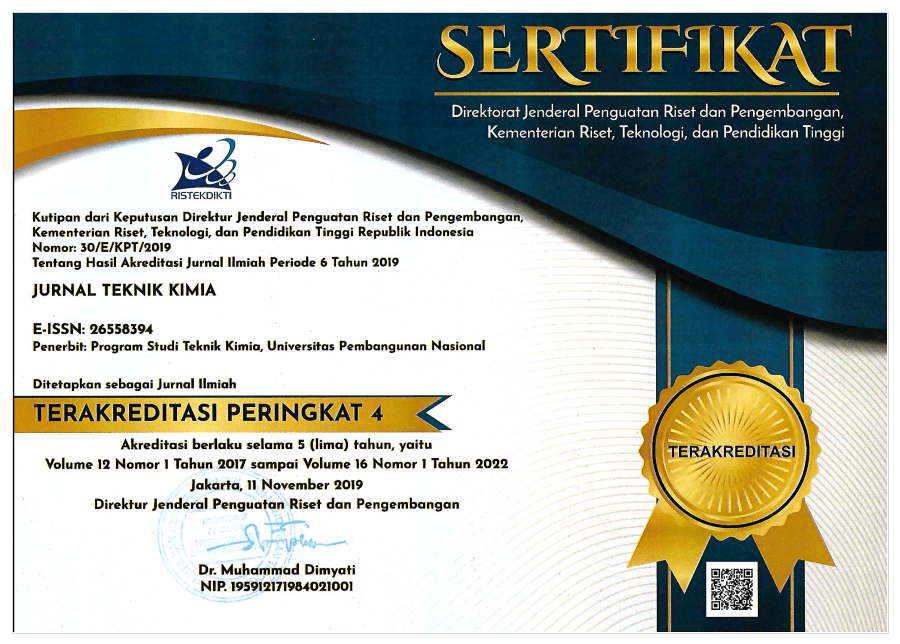STUDY OF KINETIC MODELING FOR SEA WATER IMPURITIES REMOVAL (SO4) USING DISODIUM PHOSPHATE (NA2HPO4) AND CALCIUM CHLORIDE (CACL2)
Abstract
Salt is an essential mineral for human life, typically containing NaCl along with various impurities such as Mg²⁺, SO₄²⁻, and K⁺. The production of industrial-grade salt can be achieved through chemical treatments to bind these impurities. This study aims to investigate the kinetics of Sulphate (SO4) precipitation in order to lower impurities concentrations in seawater (Mg²⁺, SO₄²⁻, and K⁺), which is used as raw material for salt production, by adding chemical agents disodium phosphate (Na₂HPO₄) and calcium chloride (CaCl₂), each at a concentration of 2N. The research was conducted using continuous stirred tank technology with a stirring speed of 100 rpm and a solution pH of 9. The kinetics of impurity reduction in seawater were simulated using mathematical formulations, specifically pseudo-first-order and pseudo-second-order models. The results indicated that the process achieved the best outcomes with the addition of SO₄ solution, resulting in the highest removal value of 757.86 mg/L compared to others. Additionally, this correlated with an R² value close to 1 for the second-order kinetics, specifically 0.9871.
Full Text:
Refbacks
- There are currently no refbacks.









